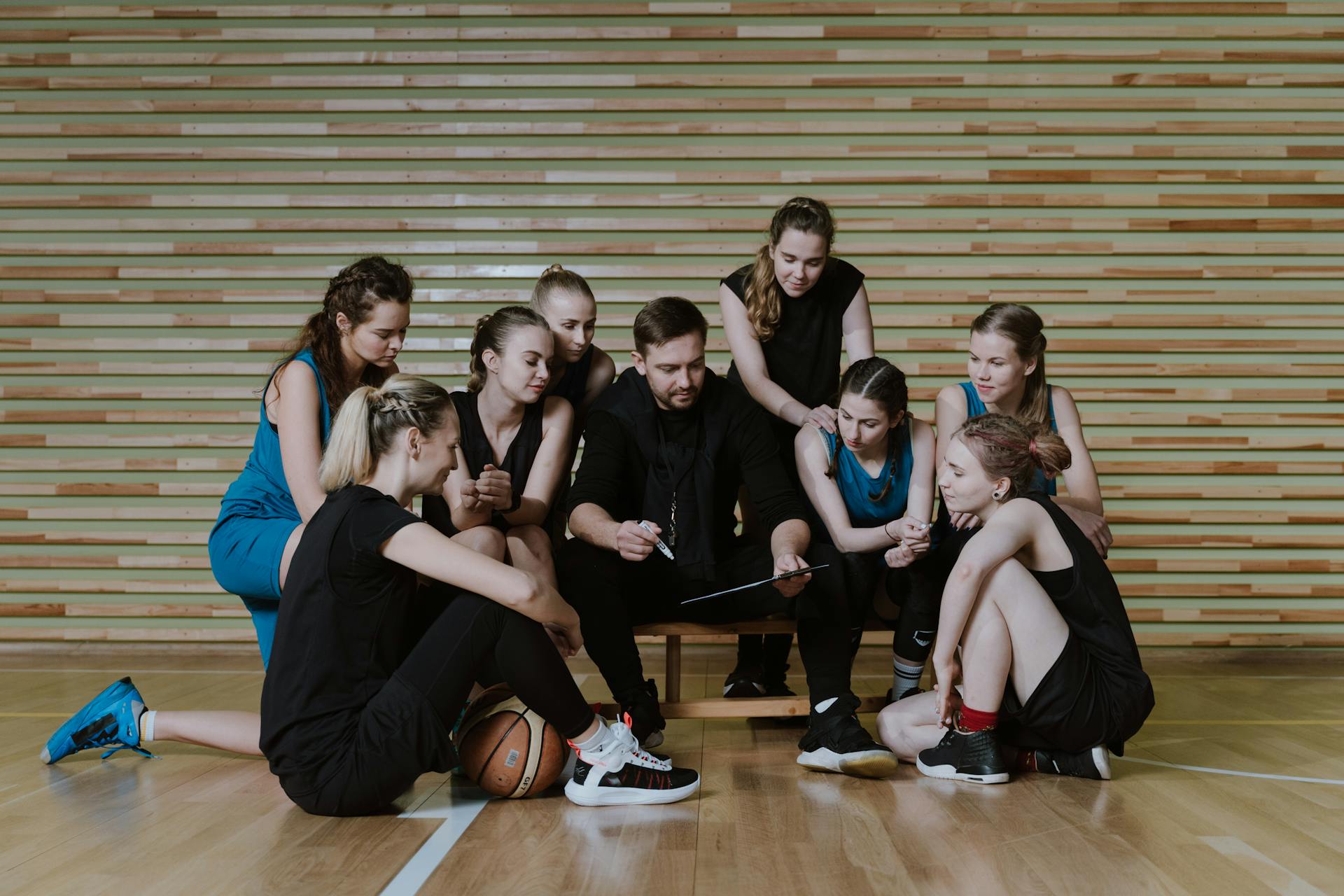How can plyometric training be tailored for UK basketball forwards to improve game-time leaps?

Many athletes, especially those in sports requiring significant leg strength and explosiveness, such as basketball, have found value in the effects of plyometric training. Plyometric exercises, which involve explosive movements to build power and speed, can significantly improve an athlete's performance on the court. For a basketball forward, whose play often involves sprinting, jumping, and other quick movements, the benefits of such training can be enormous.
The Science Behind Plyometrics
Plyometrics, also known as "jump training," involves quick, intense movements, often using the legs, to boost muscular power. For a basketball player, incorporating plyometric exercises into their training regime can help enhance their sprint speed, jumping ability, and overall athletic performance.
Dans le meme genre : Which are the best tactical drills for UK basketball teams to enhance zone offense?
The science behind plyometrics is well-documented, with numerous studies available on PubMed and Crossref illustrating its effects. Essentially, these exercises work by rapidly stretching the muscle (eccentric phase) before it contracts (concentric phase). This process, known as the stretch-shortening cycle, can provide a powerful boost to muscular force.
The effectiveness of plyometrics can also be enhanced with adjustments to the intensity, frequency, and volume of exercises. This can ensure optimal results are achieved, tailored to the unique physical requirements of basketball forwards.
A lire également : Which mental visualization techniques can help UK basketball guards perform better under pressure?
The Power of Plyometrics for Basketball Players
Now that we understand how plyometrics work, let's delve into its benefits for basketball forwards. Key performance areas for these players include sprint speed, jumping reach, and overall leg strength. All of these can be improved through plyometric training.
Basketball is a game of explosive movements. Whether it's a high-flying dunk, a quick sprint to catch a pass, or a rapid pivot to evade a defender, basketball forwards need to be fast, agile, and powerful. Plyometric training, with its focus on developing muscular power and explosiveness, is ideally suited for these athletes.
Jumping ability is crucial for forwards, who often need to leap to make shots or block opponents. Plyometric exercises like box jumps and depth jumps can significantly enhance this aspect of performance. Sprint speed, too, can be improved through exercises such as bounding and single-leg hops.
Moreover, plyometric training can also develop overall leg strength, which can benefit a forward in numerous ways. From maintaining balance during a physical tussle to providing the power needed for a quick first step, a robust set of legs can be a major advantage on the basketball court.
Tailoring Plyometric Training for Basketball Forwards
While the benefits of plyometric training are clear, it's important to remember that a one-size-fits-all approach may not yield optimal results. It's crucial to tailor the training to suit the specific needs of basketball forwards, considering factors like the player's current fitness level, their role in the team, and their individual physical characteristics.
When selecting exercises, focus on those that mimic the movements a forward would typically make during a game. Box jumps, for example, can replicate the leap a player makes to take a shot or make a block. Bounding and hops, on the other hand, can simulate the quick, explosive movements required during a sprint.
The frequency and volume of plyometric exercises should also be modified based on the player's fitness level and recovery ability. More experienced athletes may be able to tolerate more intense and frequent training, while beginners may need to start with a lower volume and gradually increase as their fitness improves.
Pre and Post Plyometric Training Considerations
Before embarking on a plyometric training program, it's crucial to undertake a thorough fitness assessment. This can help identify any areas of weakness or injury risk that may need to be addressed prior to starting the program. It's also essential to ensure players have a strong foundation of basic strength and conditioning before introducing plyometric exercises.
Post-training, recovery is vital. Plyometrics are high-intensity exercises, and the body needs adequate time to recover and adapt to the stress. This includes sufficient sleep, proper nutrition, and possibly additional recovery methods such as massage or foam rolling.
Monitoring progress is also key. Regular testing can help assess whether the training is leading to improvements in performance and identify any areas that may need additional focus.
In conclusion, plyometric training, when tailored to the specific needs of basketball forwards, can lead to significant performance enhancements. By selecting appropriate exercises, adjusting training volume and frequency, and ensuring proper pre and post-training considerations, you can help these athletes reach their full potential on the court.
Plyometric Exercises Specific to Basketball Forwards
Having established the importance of plyometric training for basketball forwards and the need to tailor these exercises to the player's requirements, we now delve into the specifics of the training. A wide range of plyometric exercises can be of benefit to basketball forwards, and some of these have been cited in studies available on Google Scholar, Crossref and PMC Free.
Basketball forwards often have to swiftly change direction, and exercises like lateral jumps, zigzag hops, or bounding can improve their agility and quickness. For improving strength and vertical jump, exercises like depth jumps, tuck jumps, and hurdle hops are beneficial. Each of these exercises simulates in-game movements, helping players become more efficient.
A meta-analysis of numerous exercises has shown that these plyometric exercises can significantly impact the physical fitness of basketball forwards. They can lead to improvements in sprint speed, jumping reach, and overall leg strength, making them an essential part of a forward's training regime.
However, the effectiveness of these exercises can depend on numerous factors, such as the player's initial fitness level, the frequency and intensity of the training, and the player's individual physical characteristics. Therefore, these exercises should be adjusted accordingly, ensuring the player can reap the maximum benefits from their training.
Conclusion: The Impact of Tailored Plyometric Training on Basketball Forwards
In conclusion, tailoring plyometric training for basketball forwards is not a task to be taken lightly. The potential benefits are massive - improved sprint speed, increased vertical jump, greater strength, and enhanced in-game performance. However, the effectiveness of this training is dependent on a multitude of factors.
According to various research on Google Scholar, Crossref, PMC Free, and Strength Cond Res, the integration of plyometric exercises into basketball training can lead to significant performance enhancements. But it's not about blindly integrating these exercises into a player's routine. It's about finding the right balance, ensuring that the exercises are suited to the player's individual needs and capabilities, and adjusting the training accordingly.
Pre and post-training considerations, such as injury risk, recovery time, and monitoring progress, are all critical aspects of a successful plyometric training program. Basketball forwards, and athletes in general, are always aiming to push their limits, constantly seeking ways to improve. With a well-designed, tailored plyometric training program, they can indeed reach new heights.
In essence, plyometric training is a potent tool for basketball forwards, capable of transforming their game-time leaps and overall performance. By carefully selecting exercises, adjusting the training to suit individual needs, and ensuring regular monitoring and sufficient recovery, these athletes can harness the power of plyometrics, leaving a significant impact on the court.
